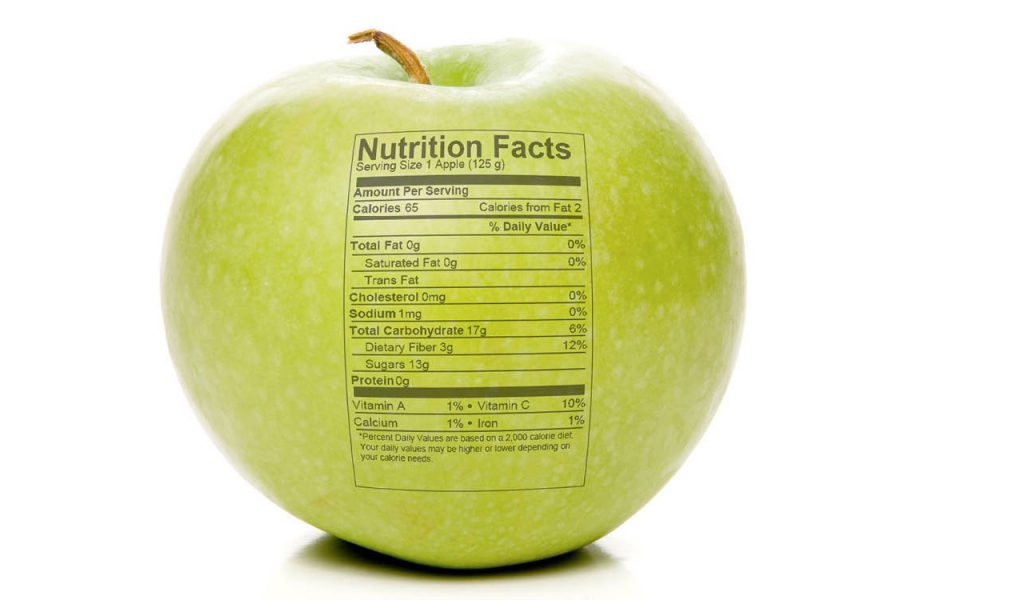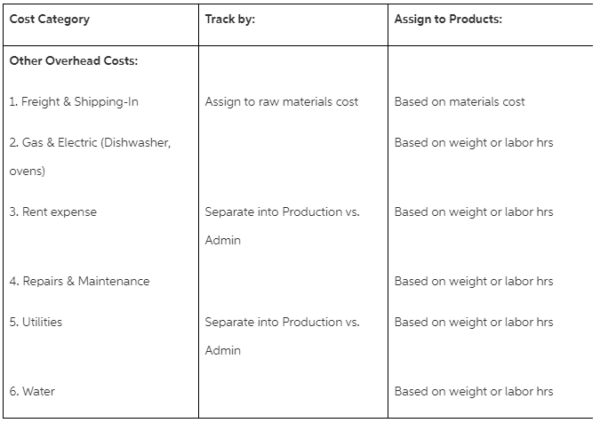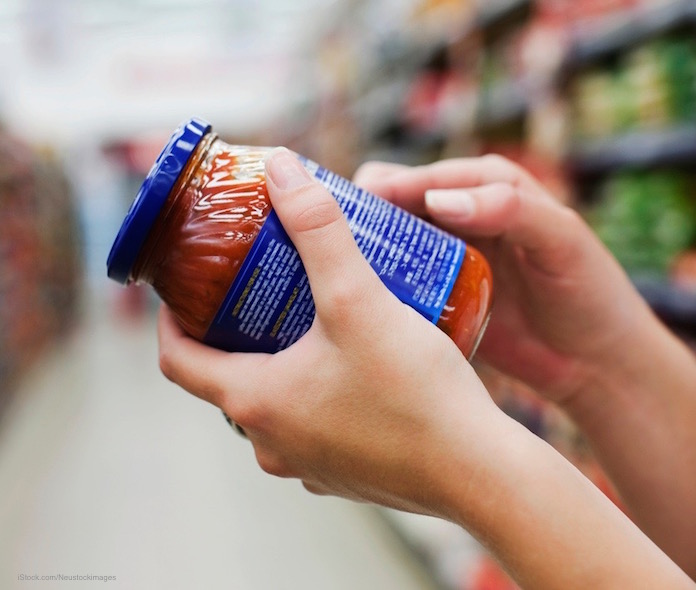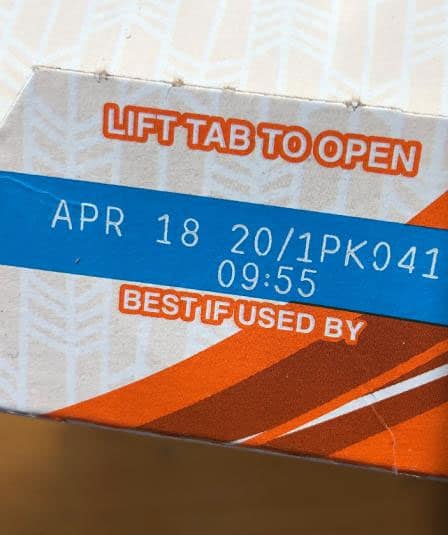41 information found on food labels
Reading Food Labels (for Parents) - Nemours KidsHealth A food with 5% or less of a nutrient is low in that nutrient. A food with 10%-19% of a nutrient is a good source of that nutrient. A food with 20% or more of a nutrient is high in that nutrient. The information on food labels is based on an average diet of 2,000 calories per day. The 8 Most Important Elements To Include On Your New Food Label Here are the most important label components so that you can market your new food brand as strategically as possible-- and still meet all of the FDA & USDA labeling requirements. The 8 Most Important Components To Include On Your Label 1. Your Brand Name The brand name of your product is one of the most important components.
Food Product Labeling Basics | Oklahoma State University Specific requirements for infant food labeling are found in 21 CFR 105.65. Details on nutritional labeling requirements for children under 4 years of age are found in 21 CFR 101.9(j)(5). ... Additional Information that May Appear on the Food Label . Nutrient Content Claims. Terms such as "low sodium" and "fat free" are referred to as ...

Information found on food labels
Food labels & nutritional information | Raising Children Network Food labels are included on all food products, except for very small packets and fresh foods like fruit, vegetables and local bakery or organic products. Food labels: tell you what ingredients and/or additives are in the food give you nutritional information about the food and food storage instructions tell you who manufactured the food. What's on the Nutrition Facts Label | UNL Food A Nutrition Facts label lists the nutritional content, the serving size, and the calories for a recommended serving of a food product. This helps consumers make the best decision on how much to eat, maybe when they want to eat this food, or how they can better balance their food choices throughout the day. In addition to the Nutrition Facts ... 3 Ways to Read Nutrition Facts on Food Labels - wikiHow The nutritional facts that are listed on food labels contain a lot of information. To interpret what the daily values and percentages actually refer to, start by checking the serving size listed at the top of the label. ... These are vitamins, minerals, and nutrients that are found in the food. The most common inclusions are vitamin A, vitamin ...
Information found on food labels. Get the Facts: Know Your Food Label - Health Powered Kids Pass out two to three nutrition facts labels to each young person or group. Ask the youth to take a few minutes to do the following: Locate the Nutrition Facts label for your food item (s). Find the Serving Size and Servings Per Container. Remember: all of the nutrition information on the label is based on one serving of the food. The Importance of Reading the Food Label and Nutritional Facts The Importance of Reading Food Labels This information does two things: The Basics of Reading a Nutrition Label 1. Serving Size 2. Calories per Serving 3. Percent Daily Values 4. Nutrient Contents 5. Vitamins & Minerals 6. Ingredient List Putting it All Together Reading food labels makes a big difference when it comes to your family's health. How to understand food labels - Eat For Health The Nutrition Information Panel on a food label offers the simplest and easiest way to choose foods with less saturated fat, salt (sodium), added sugars and kilojoules, and more fibre. It can also be used to decide how large one serve of a food group choice or discretionary food would be and whether it's worth the kilojoules. Information Required on a Food Label: What to Know The informational panel includes areas of your label. This includes: The nutrition facts Name and address of the packer, manufacturer and/or distributor including street address, city or town, state, country (if outside the USA) and zip code. Ingredient list Allergy labeling. Each of these are vital for the consumer to read.
What is required on a food label? - USDA A meat and poultry label is required to contain 8 features. These are: the product name, inspection legend and est. number, handling statement, net weight statement, ingredients statement, address line, nutrition facts, and safe handling instructions. These requirements are found in the Code of Federal Regulations (9CFR 317.2/381 Subpart N). Food Labels | Nutrition.gov Food Labels Food labels can help you make healthy choices when buying food in grocery stores or restaurants. Labeling Organic Products USDA, Agricultural Marketing Service, National Organic Program Learn about organic foods, requirements, and how they are labeled. Calories on the Menu HHS, Food and Drug Administration Nutrition Labels 101: What's Required? What's Optional? Total carbohydrates is a required listing unless there is less than 1 gram, at which point it can be expressed as "contains less than 1 gram," or if less than 0.5 grams per serving, it can be expressed as zero. Sugars are the sneaky nutrient found naturally in many "healthy" foods, including fruit and milk. 10 Things You Didn't Know About Food Labels 6. Natural. The label 'natural' on packaging doesn't have any relation to the product's nutrition or sustainability of production. In the U.S., the term carries meaning when applied to meat, poultry, and eggs: the natural label indicates that no artificial colors or ingredients have been added.
What Information on a Food Label Is Mandatory? - Our Everyday Life Food labels are important for identifying what a food is, what is contained in it and how it fits into the diet. The U.S. Food and Drug Administration ensures that foods subject to requiring food labels are labeled correctly. There are five mandatory components for food labels. Statement of Identity Food Labels | CDC If you eat the whole thing, you are eating 8 times the amount of calories, carbs, fat, etc., shown on the label. Total Carbohydrate shows you types of carbs in the food, including sugar and fiber. Choose foods with more fiber, vitamins, and minerals. Choose foods with lower calories, saturated fat, sodium, and added sugars. Avoid trans fat. PDF Food Labeling Guide - Food and Drug Administration Food Labeling Guide Additionalcopies are available from: Office of Nutrition, Labeling, and Dietary Supplements HFS-800 Center for Food Safety and Applied Nutrition Food and Drug Administration... Key Elements of a Food Label To Know | Food Labeling Info Although the FDA doesn't test the nutrition of every food product, you must report accurate information on your label. Below is a list of information that should be on your product's Principal Display Panel (the area most likely to be seen by consumers) in order to comply with labeling regulations: Food ingredients Minerals Caloric value
USDA ERS - Food Labeling Manufacturers with $10 million or more in annual sales were required to switch to the new label by January 1, 2020; manufacturers with less than $10 million in annual food sales had until January 1, 2021 to comply. Future research can investigate whether the changes improved the diet quality of U.S. consumers.
Food Labels Explained - Farm Aid There are many different food labels that contain information about how food was grown or processed. However, some labels can be misleading. Below are examples of labels to look for and ask questions about at the store or market where you see them. ... Organic labels can be found on produce, dairy, meat, processed foods, condiments and ...
Guidance for Industry: Food Labeling Guide | FDA Office of Nutrition and Food Labeling, HFS-800 Center for Food Safety and Applied Nutrition Food and Drug Administration 5001 Campus Drive College Park, MD 20740 (Tel) 240-402-2373 Translations...
Food Labeling Basics - Food Quality & Safety The name and place of business of the food product's manufacturer, packer, or distributor statement must follow the ingredients statement and may consist of a business name, city, and zip code if the business' street address may be found in a public directory under the business name. Otherwise, the complete address must be found on the label.
Food Labels 101: Understanding the Nutrition Facts Label A sodium level of 140 mg or less on the nutrition facts label is considered low sodium. This is an essential number to look for when reading the label. Total Carbohydrates - Fiber and Sugar Foods high in fiber can be beneficial to a healthy diet, as fiber helps manage blood sugar levels and can lower cholesterol.
Food labels - Better Health Channel Food labels carry useful information to help you make informed choices about what you and your family eat and drink. Most packaged foods are required to have a label with this information, but the information required depends on the food type. The food label will tell you all sorts of information, including: what the food is manufacturer's details
About food labels - Canada.ca By law, most packaged food must be labelled with: a nutrition facts table, which gives you information on: serving size. calories. nutrients. percent daily values (% DV) an ingredient list, which lists all the ingredients in a food by weight. this begins with the ingredient that weighs the most and ends with the ingredient that weighs the least.
Understanding Dates on Food Labels - Eatright.org These are found primarily on perishable foods such as meat and dairy products. "Closed Dating" is a series of production numbers used by the manufacturer to indicate when a product was made. They primarily appear on shelf stable products such as cans and boxes of food. Except for infant formulas, product dates are not expiration dates.
Understanding Food Labels | The Nutrition Source | Harvard T.H. Chan ... Understanding Food Labels The information on food labels is intended to help consumers become savvy about their food choices. The front, back, and sides of a package are filled with information to inform us what the food contains and to provide guidance in making healthier selections of processed foods.
General Information and Resources for Food Labeling - USDA FDA's Food Labeling program develops policy and regulations for dietary supplements, nutrition labeling and food standards, infant formula and medical foods. Also conducts scientific evaluation to support such regulations and related policy development. The New and Improved Nutrition Facts Label-Key Changes
How To Read Food and Beverage Labels | National Institute on Aging For more information about food labels USDA MyPlate 703-305-2060 U.S. Department of Health and Human Services 877-696-6775 U.S. Food and Drug Administration 888-463-6332 druginfo@fda.hhs.gov This content is provided by the NIH National Institute on Aging (NIA).
3 Ways to Read Nutrition Facts on Food Labels - wikiHow The nutritional facts that are listed on food labels contain a lot of information. To interpret what the daily values and percentages actually refer to, start by checking the serving size listed at the top of the label. ... These are vitamins, minerals, and nutrients that are found in the food. The most common inclusions are vitamin A, vitamin ...
What's on the Nutrition Facts Label | UNL Food A Nutrition Facts label lists the nutritional content, the serving size, and the calories for a recommended serving of a food product. This helps consumers make the best decision on how much to eat, maybe when they want to eat this food, or how they can better balance their food choices throughout the day. In addition to the Nutrition Facts ...
Food labels & nutritional information | Raising Children Network Food labels are included on all food products, except for very small packets and fresh foods like fruit, vegetables and local bakery or organic products. Food labels: tell you what ingredients and/or additives are in the food give you nutritional information about the food and food storage instructions tell you who manufactured the food.
















Post a Comment for "41 information found on food labels"